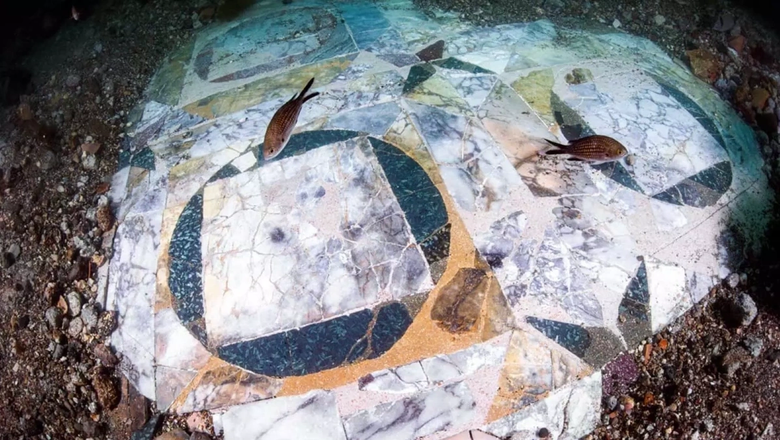
A source: Parco Archeologico Campi Flegrei
In the past, she decorated the floor of a villa in the resort town of Bailly. Not far from Naples, an ancient Roman mosaic was discovered in the sea, preserved in almost perfect condition. It turned out to be a marble floor that once decorated the porch of a Roman villa, CNN reports.
The mosaic was submerged due to a geological phenomenon known as bradyseism, in which the earth's surface gradually rises or falls as a result of pressure changes in underground magmatic or hydrothermal systems.
The villa where the mosaic was located was built in the ancient resort town of Baiae, where the residences of such famous historical figures as Julius Caesar and Emperor Nero were located.
Preliminary studies have shown that the mosaic is made of irregularly shaped pieces of marble. This technique was popular from the III to the V century A.D. The marble was damaged by the collapsed walls of the room, whose height exceeded 10 m. Underwater archaeologists continue to work on extracting the mosaic from the seabed, and some fragments have already been brought to land. Scientists plan to restore an entire section of the floor.
The mayor of the Italian city of Bacoli, Josi Gerardo Della Ragione, called the find amazing. He noted that the floor was laid out shortly before geological processes carried the mosaic to the seabed.
Campi Phlegrei, or Phlegrean fields, is a large volcanic area, a giant depression formed as a result of a series of large eruptions. The last major eruption occurred in 1538 and led to the formation of a new mountain in the bay. Now this area is popular with divers who can observe the flooded ruins.
However, since December 2022, seismic activity has begun in the area again, and experts fear that the volcano may awaken after a long dormancy.







